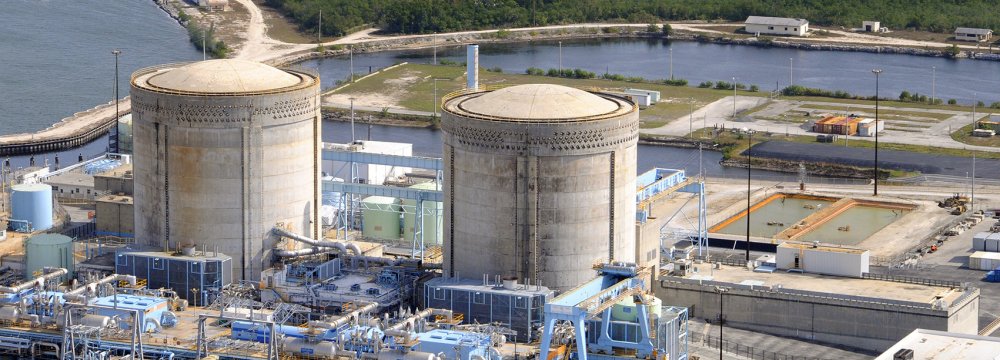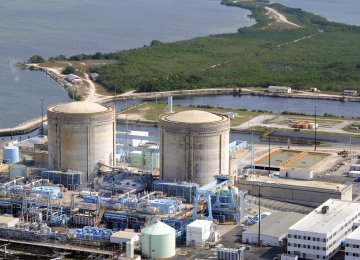Hurricane Irma will pose the toughest test yet for US nuclear power plants since reactors strengthened their defenses against natural disasters following the Fukushima Daiichi nuclear accident in Japan in 2011.
Irma was on course to hit South Florida early on Sunday as a Category 4 storm, packing winds of up to 233 kilometers per hour and bringing a storm surge of as much as 3.6 meters to a state that is home to four coastal nuclear reactors, Reuters reported.
The US National Hurricane Center’s forecast track shows Irma making landfall on the southwest side of the Florida Peninsula, west of the two nuclear reactors at the Turkey Point plant.
The operator, Florida Power & Light, has said it will shut Turkey Point well before hurricane-strength winds reach the plant. The reactors are about 42 kilometers south of Miami. FPL said it will also shut the other nuclear plant in Florida at St Lucie, which also has two reactors on a barrier island on the state’s east coast, about 193 km north of Miami.
“We will shut the reactors down 24 hours before Category 1 force winds are forecast to hit,” FPL Chief Executive Eric Silagy told a news conference.
FPL said both Turkey Point and St Lucie were designed to withstand storms stronger than any ever recorded in the region and both plants are elevated six meters above sea level to protect against flooding and extreme storm surges.
But South Miami Mayor Philip Stoddard said he was concerned about the potential for floods to damage power generators at Turkey Point, which in turn might threaten the ability of the plant to keep spent nuclear fuel rods cool. At Fukushima in Japan, an earthquake and tsunami disrupted power supplies and caused the fuel in some units to melt down.
“The whole site is pretty well able to handle dangerous wind; the real problem from my perspective is water,” Stoddard said.
He said he was more worried about the nuclear waste than the reactors.
“The real question is can they keep the spent fuel cool.”
US nuclear operators have taken steps to improve preparations for disasters since Fukushima.
“Things are better today than in March 2011. Time will tell whether better proves good enough,” said Dave Lochbaum, director of a watchdog group, the nuclear safety project, at the Union of Concerned Scientists.











Add new comment
Read our comment policy before posting your viewpoints